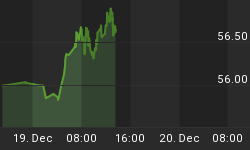As stunning as the "Inflation Is Now Illegal" headline might seem, a new law was indeed just passed that officially makes inflation illegal.
The New York Times is reporting As Inflation Soars, Zimbabwe Economy Plunges.
Hyperinflation has bankrupted the government, left 8 in 10 citizens destitute and decimated the country's factories and farms. Pay increases have so utterly failed to keep pace with price increases that some Harare workers now complain that bus fare to and from work consumes their entire salaries.
Citing a leaked central bank document, Reuters reported Tuesday that prices of basic items like meat, cooking oil and clothes had risen 223 percent in the past week alone. Soaring costs have made it impossible for both national and local governments to meet budgets and for businesses to afford raw materials, while subsidies for basic commodities have drained the government treasury and promoted corruption.
Seeking to revive farm production, for example, the government sells gasoline to farmers at a bargain rate of 330 Zimbabwe dollars per liter -- and farmers promptly resell it on the black market for 10 times that, leaving their fields idle.
The central bank's latest response to these problems, announced this week, was to declare inflation illegal. From March 1 to June 30, anyone who raises prices or wages will be arrested and punished.
Efforts to suppress dissent are rising: in recent weeks, trade union officials were seriously injured in police beatings, arsonists burned the home of a leading pro-democracy activist and church leaders were arrested while meeting to discuss the economic crisis. Foreign journalists remain barred from the country under threat of imprisonment, and harassment of Zimbabwean journalists has sharply increased.
The black market, which already flourishes beyond the reach of tax collectors and regulators, is likely to grab an even larger share of the economy when the government freezes prices in March, because stores will be unable to make a profit selling products at government-fixed prices.
That folks is hyperinflation. It is not to be confused with a chart of copper that looks like this.
Copper

Nor should hyperinflation be confused with an oil chart that looks like this.
Crude

The important thing to remember about the above chart of crude prices is that it reflects not only the impacts of inflation (an increase in money supply and credit) but also peak oil and geopolitical factors.
Lumber

Seriously folks, does that look like hyperinflation? Yet week in and week out I see comparisons between what is happening in the US to the Wiemar Republic, Argentina, and even Zimbabwe.
OK Mish what about corn?
Corn

Obviously there is a recent bad data print on the downside but otherwise that chart reflects what is happening. Corn has more or less drifted between $3.00 on the top end and just under $2.00 on the bottom end for years on end. Clearly we do not see hyperinflation in corn. But what do we see? We see the results, not of hyperinflation or even inflation. We see the effects of stupid government policies promoting corn based ethanol even when Brazil and other suppliers are willing to provide the US with sugar based ethanol at better prices.
It is important not to confuse stupidity with inflation. It is important not to confuse peak oil with inflation. It is also important not to confuse drought with inflation.
On the other hand it is extremely important to recognize that productivity gains mask inflation. Productivity gains, led by an internet revolution, in conjunction with falling commodity prices let the Greenspan Fed run rampant with what is true inflation (an increase in money supply and credit).
I will have a post on "magic printing presses" tomorrow to discuss these ideas in more detail. I will also have two significant announcements to make as well. I hope everyone tunes in to those announcements. I ask in advance that you read them.















